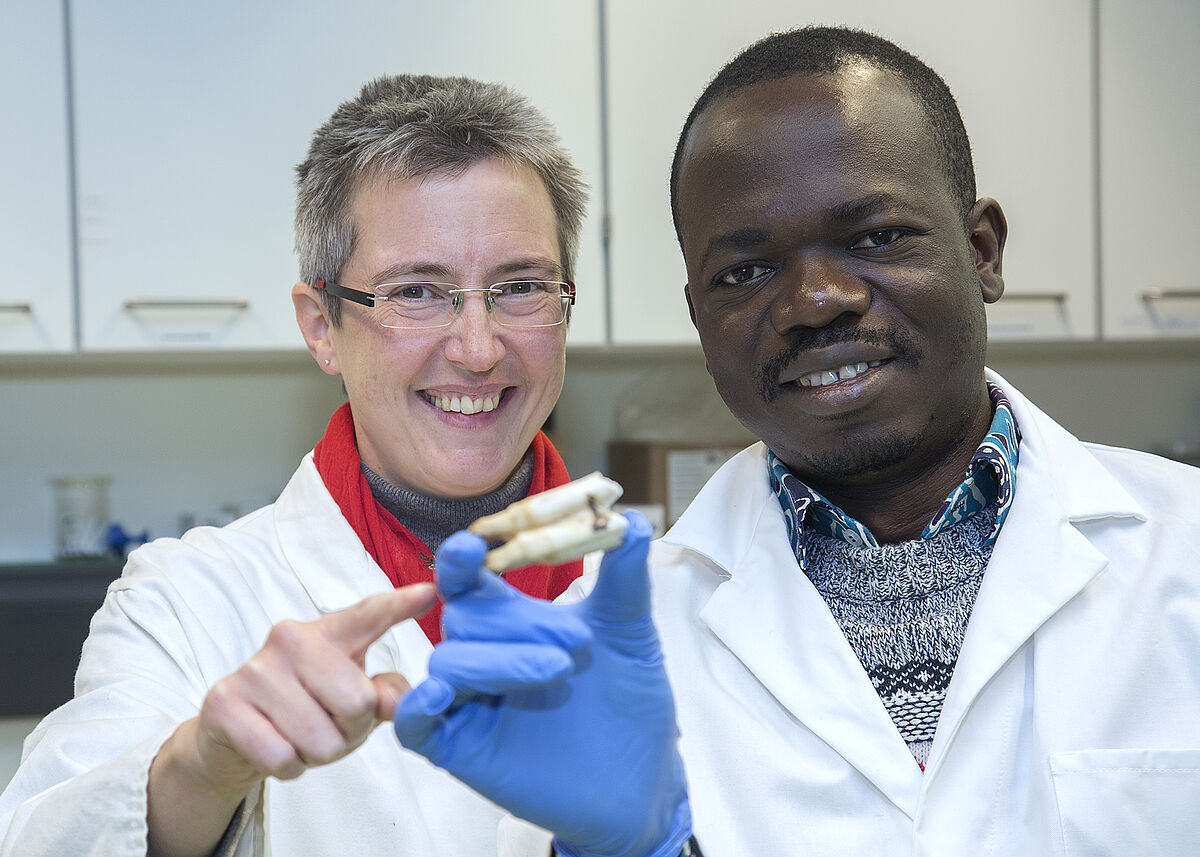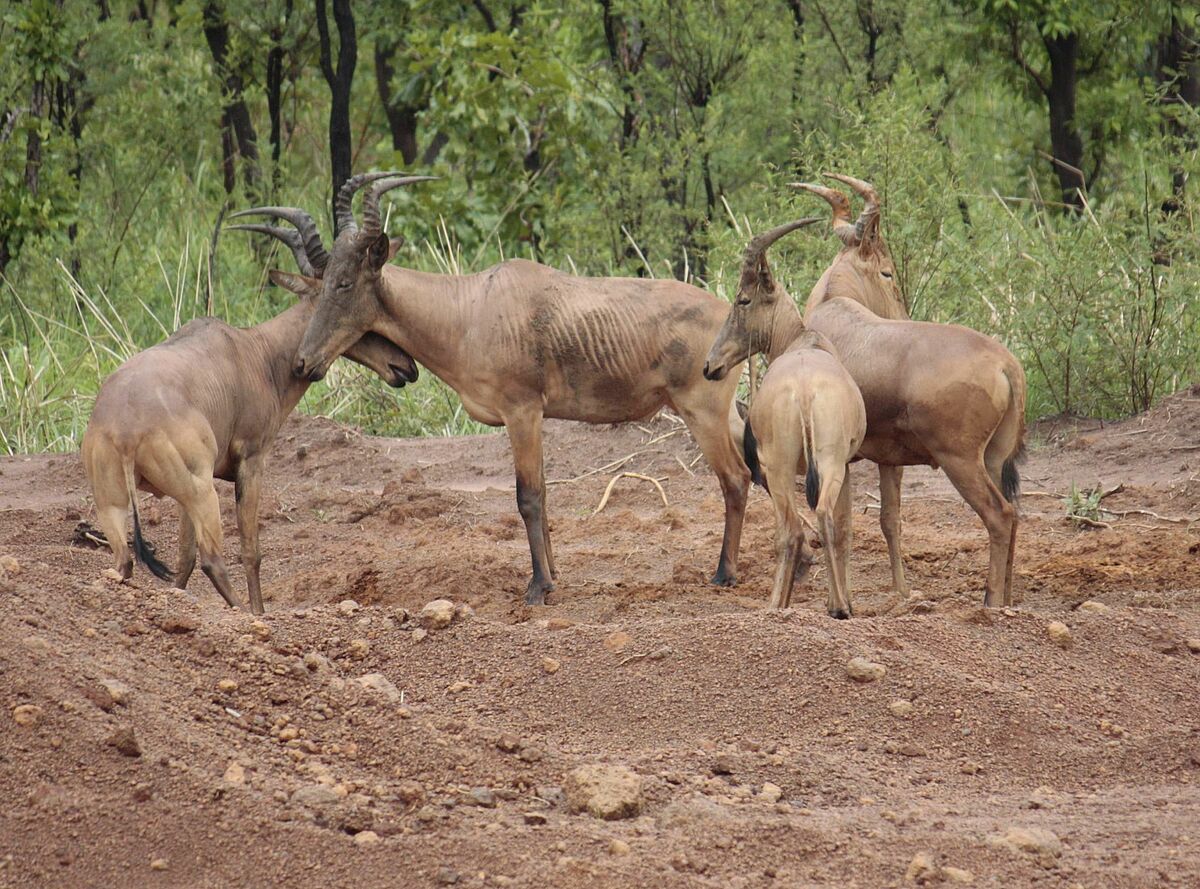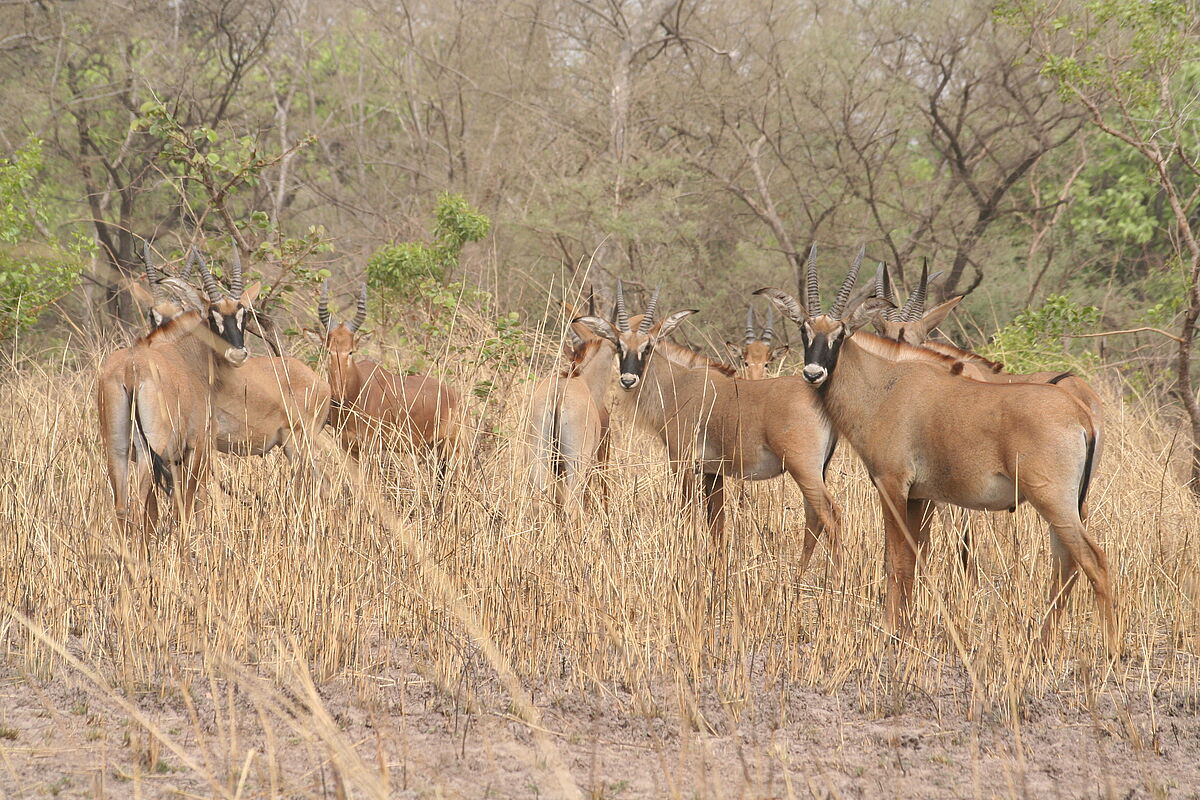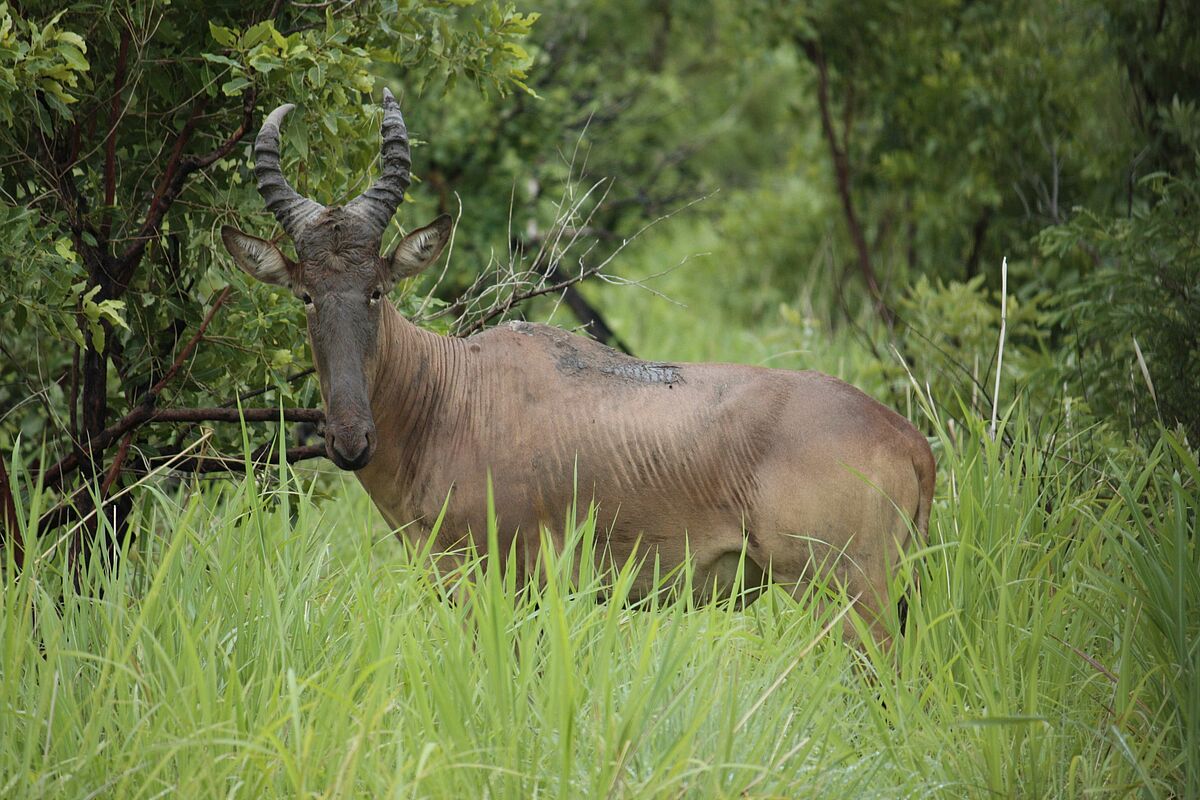Nutritional stress, competition, and loss of functional habitat as factors limiting recovery of rare antelope in Benin national parks
(funded by Alexander von Humboldt-Foundation/Georg Forster Research Fellowship)
Topi have declined considerably in West Africa, partly due to deteriorating habitat conditions and poaching. Comparative data for the nutritional and competition are however lacking. The issue of how the spatial partitioning and other aspects of food resources and habitat conditions may enable several species of grazing herbivores to coexist while using the same grass resources in a region is of fundamental importance in ecology and management of herbivore communities. This project aims at improving the understanding of the ecology of the grazers’ assemblage, particularly how the spatial scale of resource use influences resource partitioning among grazers that attain different density in the same region. In the Benin national parks, the rare resource specialist topi (Damaliscus korrigum) inhabits the same region as the more common generalist grazers buffalo (Syncerus caffer brachyceros), waterbuck (Kobus defassa), hartebeest (Alcelaphus buselaphus), roan (Hippotragus equinus), and kob (Kobus kob). The topi antelope is predicted to be sensitive to habitat change and competition from sympatric grazers, and is susceptible to nutritional deficiencies. It is therefore important to elucidate possible nutritional stress, competition, and loss of functional habitat as factors limiting recovery of rare antelope in Benin national parks. We will test how different body-sized grazers are distributed along gradients of food availability and predation risk by using long-term aerial wildlife counts from the Pendjari Biosphere Reserve in combination with detailed vegetation analysis. Specifically, we will investigate how the quality of grass, the abundance of grass biomass, and the associated risks of predation affects the presence/absence and habitat use of small, intermediate and large savanna grazers. We hope to contribute to explaining why topi occur in low density in West African savanna as well as the decline and the lack of recovery by the population.
Responsible persons: Chabi Djagoun, Nicole Wrage-Mönnig




